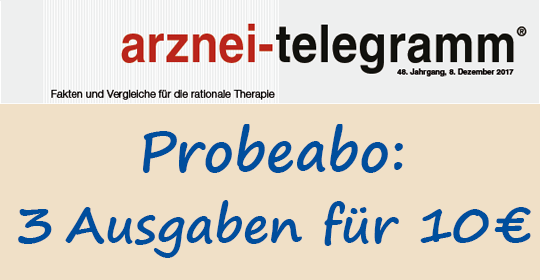Translation of a-t 2024; 55: 56
CURRENT ADR NETWORK REPORTDecreased thirst sensation with tirzepatide (MOUNJARO)
A 51-year-old female and a 46-year-old male subcutaneously injected up to 5 mg and 10 mg of the GLP-1 and GIP (glucose-dependent insulinotropic polypeptide) receptor agonist tirzepatide (MOUNJARO), respectively, once a week to trigger weight loss. Shortly after starting treatment and after using the product for approximately three months, respectively, they noticed a substantial decrease in or even lack of thirst sensation during or after sport in particular (NETZWERK reports 18.474 and 18.475). Neither the current German Summary of Product Characteristics1 (SPC) nor the US Product Information2,3 contains any evidence of this type of adverse effect with this medicinal product, which has been approved in Germany for type 2 diabetes mellitus and obesity (a-t 2023; 54: 91-2 and 2024; 55: 29-30). Similarly, we find no published reports of decreased thirst sensation with tirzepatide. However, a reduction in thirst sensation and fluid consumption has long since been associated with the GLP-1 hormone in animal studies and in humans.e.g. 4,5 There is also evidence of corresponding effects with pure GLP-1 agonists used as medicinal products: In two laboratory studies, overall water consumption was reduced in rats following intraperitoneal and intraventricular or exclusively intraventricular injection of liraglutide (VICTOZA, SAXENDA; a-t 2009; 40: 80-2 and 2016; 47: 47-8) and exendin-4 (equivalent to exenatide [BYDUREON, BYETTA]; a-t 2007; 38: 43-5) over 24-hour and 2-hour observation periods, respectively, compared to that recorded following injection of physiological saline solution.6,7 This was apparently regardless of reduced feed intake during administration of the active substances.6 In two small, randomised, double-blind, crossover studies conducted by a Swiss working group and involving 20 healthy volunteers8 and 35 patients with primary polydipsia,9 participants receiving 1.5 mg of the pure GLP-1 agonist dulaglutide s.c. once a week for three weeks (TRULICITY; a-t 2015; 46: 27-8) drank smaller quantities or significantly less during an 8-hour test with standardised meals compared to those receiving placebo (median 1,300 ml versus 1,600 ml and, on average, 2,460 ml versus 2,950 ml, respectively).8,9 Decreased thirst sensation was also reported with the active drug substance in the larger-scale study.9 The authors refer to a laboratory test demonstrating marked neuron expression of GLP-1 receptors in the murine brain, which are supposed to suppress thirst as soon as fluid is consumed, although the intracerebral injection of exendin-4 (exenatide) did not affect the drinking volume of the animals in this study.10 It seems plausible to us that tirzepatide could also decrease the thirst sensation. If decreased thirst sensation is observed during treatment with tirzepatide or also with pure GLP-1 agonists, please report this to our NETZWERK DER GEGENSEITIGEN INFORMATION.
| (R = randomized study) | |
| 1 | Lilly: MOUNJARO SPC, date of revision of text Apr. 2024 |
| 2 | Lilly: US-am. ZEPBOUND Product Information, date of revision of text March 2024; https://a-turl.de/vtq6 |
| 3 | Lilly: US-am. MOUNJARO Product Information, date of revision of text July 2023; https://a-turl.de/gg7x |
| 4 | TANG-CHRISTENSEN, M. et al.: Am. J. Physiol. 1996; 271: R848-56 |
| R 5 | GUTZWILLER, J.P. et al.: Digestion 2006; 73: 142-50 |
| 6 | McKAY, N.J. et al.: Am. J. Physiol. Regul. Integr. Comp. Physiol. 2011; 301: R1755-64 |
| 7 | McKAY, N.J. et al.: J. Neuroendocrinol. 2013; 25: 929-38 |
| R 8 | WINZELER, B. et al.: Endocrine 2020; 70: 292-8 |
| R 9 | WINZELER, B. et al: J. Clin. Invest. 2021; 131: e151800 (9 pages) |
| 10 | AUGUSTINE, V. et al.: Nature 2018; 555: 204-9 |
© arznei-telegramm (Berlin/Germany), July 2024, protected by copyright laws.
Autor: Redaktion arznei-telegramm - Wer wir sind und wie wir arbeiten
Diese Publikation ist urheberrechtlich geschützt. Vervielfältigung sowie Einspeicherung und Verarbeitung in elektronischen Systemen ist nur mit Genehmigung des arznei-telegramm® gestattet.
